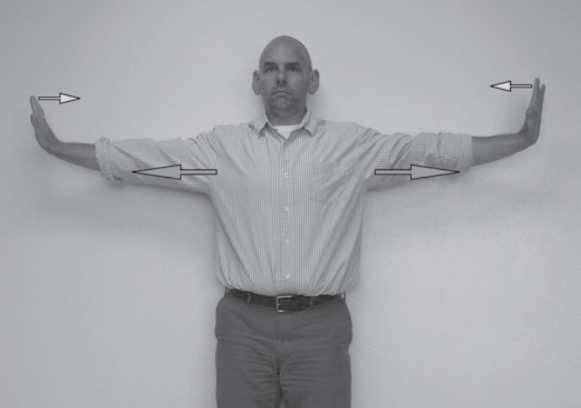Don’t Just Sit There offers a true alternative to our sedentary workplaces, giving concrete steps to becoming more healthy and more productive. —Robb Wolf, New York Times bestselling author of The Paleo Solution
From Chapter 2 of Don’t Just Sit There: The Single Best Ergonomic Position? No Such Thing!
Modern ergonomics is not the scientific pursuit of what is best for the human body, but the scientific pursuit of how the human body can be positioned (in one position, for eight or more hours at a time) for the purpose of returning to work the next day, and then the next and the next and the next. Before you apply ergonomic data to your workstation, consider this: Finding an “optimal working position” is not about your long-term health as much as it is about your production value over a short period of employable time. This isn’t to say that your office’s ergonomics expert doesn’t have your best interests at heart, but that there’s a broader perspective to be considered. There really isn’t a healthy way for the body to sit for long periods of time; there is only a way to sit that loads the parts damaged by chronic sitting in a less damaging way.
Therapeutically, we tend to solve pain problems by seeking a “better” body position than our current one. But the problem with our bodies is rarely the position we hold them in; the problem is the high frequency at which we are in a repetitive position. Being in a single position repetitively, as we have been when chair-sitting (or computer-using, or car-driving, or stressing), means that there are an infinite number of other positions going unused. For decades, researchers have been trying to figure out the best way to organize the body for optimal performance at the office. The underlying flaw in much of the research—or at least in the presentation of the research—is that it fails to highlight the use of a single position as a problem. Our quest to find an optimal position for stillness will always be frustrated by the problems inherent in a lack of movement.
Fortunately, in light of new understanding regarding the importance of all-day movement as opposed to exercise buried in a mostly sedentary day, there is a new trend in health research across the board: to look at the physiological and biomechanical effects of the sitting behavior.
I’ve brought all of this up because I want you to understand why I’ve chosen to write a book on why the sedentary desk—whether it be a sitting or standing one—is the problem. If we keep trying to solve the “what’s the best way to be in front of my computer” problem, we’ll miss that the answer is “as little as possible.” That all being said, you still need to work, be in front of your computer, and commute with regularity. But our lack of knowing (yet) how to solve the problem shouldn’t keep us from discussing the actual problem. The fact that we must work can be considered as we try to figure out how to use more of our bodies’ ranges of motion, to prevent our muscles and other body tissues from atrophying in this movement drought.
There are evidence-based ways to sit and stand better, but the conditions that make these positions better for you are limited in scope. Which is why in addition to making postural adjustments, which introduce new body loads and require different muscles to work, you also need to move more throughout the day—throughout being the key term.
The newest research shows that you can be active (as in, faithfully completing your daily workout at the gym or logging “10 miles ran today” on your marathon-training program) and still be sedentary (as in, commuting back and forth each day to your desk job and consuming extensive digital entertainment in your leisure hours).
Let’s work to solve the problem by not just getting up and out of our chairs, but by creating intermittent movement—both on the large and small scale—while still getting our business/work done. As you proceed through the next sections about workstations, sitting, standing, and doing clever exercises in the office, always keep the big-picture goal in mind that these optimal setups are really way stations to flow through over the course of the workday.
Try an exercise from Don’t Just Sit There!
Exercise: Nerve Stretch
- Reach your hands away from you, making a T and a “ STOP! In the name of love” motion with each hand.
- Spreading the fingers away from each other, slowly work your fingertips back toward the main axis of your body.
- Keep your middle fingers pointing up, your thumbs pointing forward, and your elbow pits facing the ceiling.
- Think of reaching the entire arm bone away from you.
Find the ebook and a program to get you moving at work in "The Office Workers 'Don't Just Sit There' Multimedia course.

